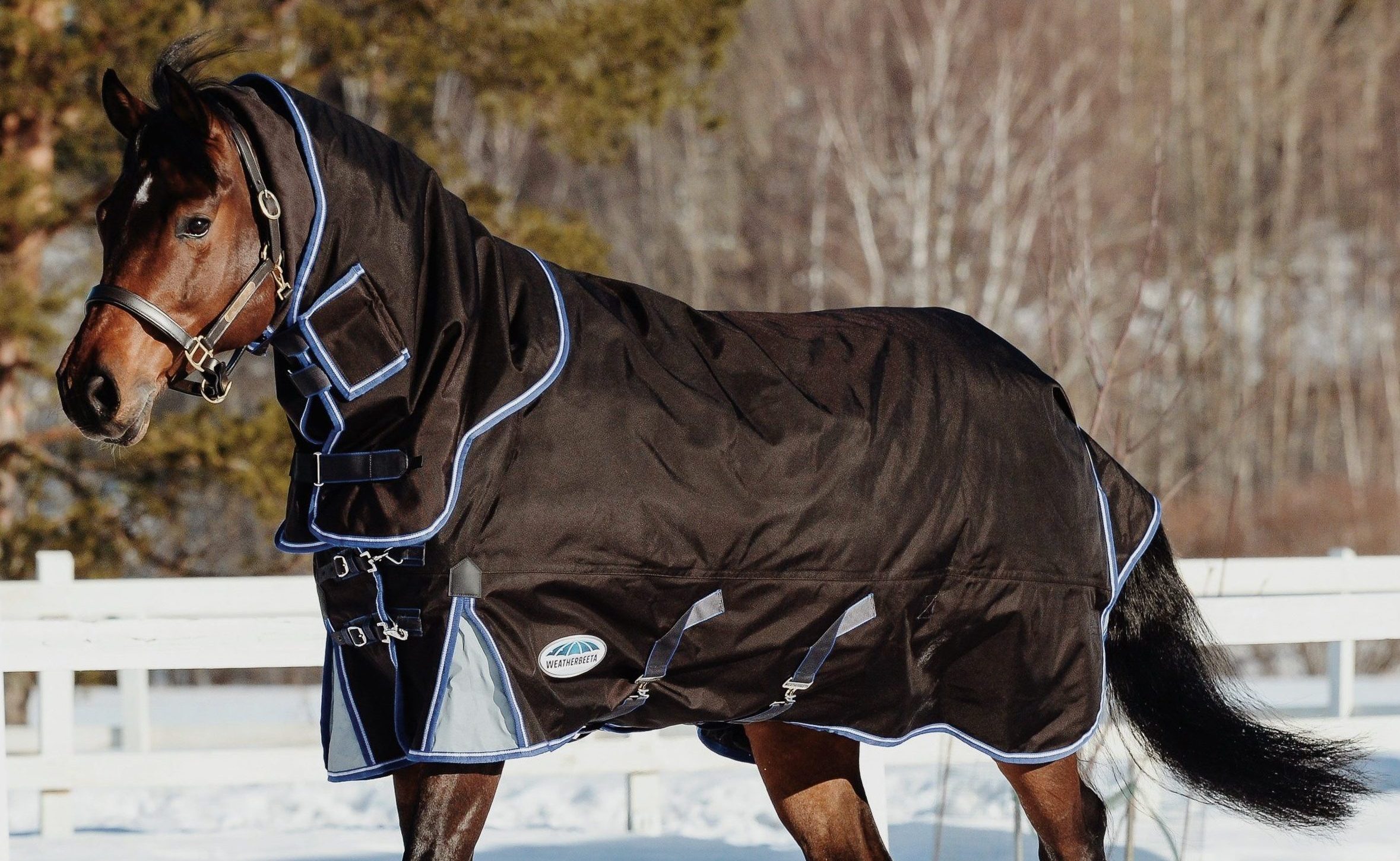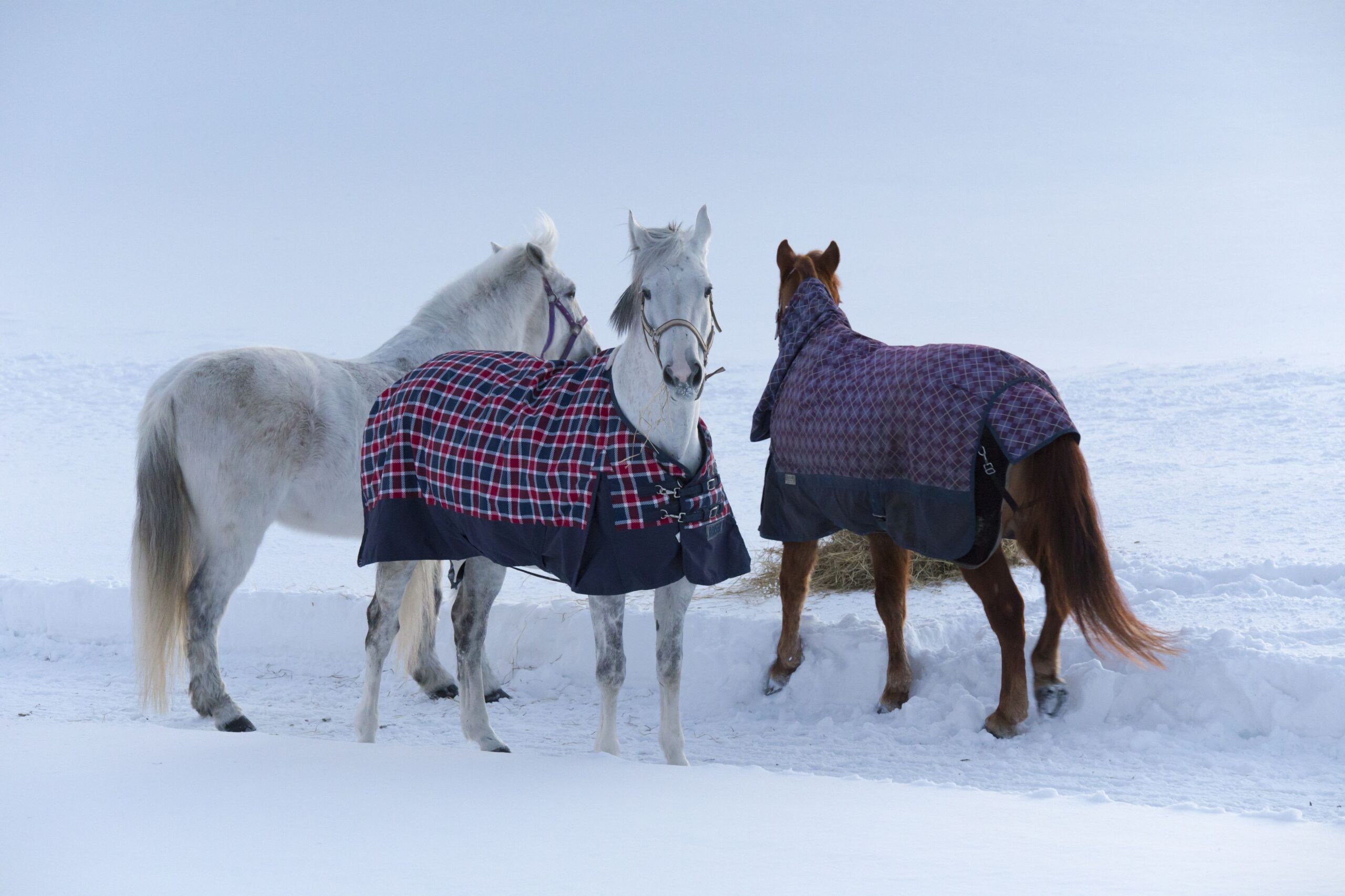It’s blanketing time of year and there are a lot of things to consider when it comes to blankets. Here are a few to ensure your horse stays warm and comfortable:
1- Is your horse turned out or kept in a barn? If he’s turned out, you’ll need a more durable canvas blanket especially if he is out with his buddies. It should also be waterproof as horses given their choice of being in or out, normally choose out, even if the weather is terrible. Also, whether they are in or out, pay attention to the temperature. If they sweat under a blanket, not only does the salt take a toll on their coat, but a damp blanket from sweat as the evening cools, can cause them to get chilled. If you have a high denier count and it’s waterproof, it probably won’t breathe well so be sure to take it off during warm days.
2- If you have stickers or even shavings, a fleece lined blanket can be literally a pain as everything will embed itself into the fleece. It might be better to go with a canvas or nylon lining, though “loft” can help trap warm air and keep them more comfortable.
3- A good-fitting blanket is very important. Don’t just use a previous horse’s blanket who was about the same size. If it’s too big, it’ll ride too far back and rub the horses withers on top, or hang way low on their chest in front. If it’s too small, they’ll rub the hair off in front of their shoulders. Most well-known blanket manufacturers use a good cut so their blankets fit most horses well. My experience with cheaper blankets was usually a poor fit in the front.
4- Do you want to be able to take it off over their head and be able to adjust it in the front? That’s a nice option, just be sure to get one that has an easy to adjust front, so after a few weeks, it isn’t welded shut, but not so easy that it comes undone while they’re out playing.
5- Are you going to use a hood for the winter? If so, be sure your blanket has 3 D-rings to attach it to or the hood will wiggle around all the time and probably rub their mane out.
6- Layers- I always preferred a sheet during the day and a blanket over the top of that at night. It cut down on chore time and kept them comfortable at most temperatures.
7- Do you use lights? This might need to be addressed in its own article, but keep in mind that when you keep a horse under lights their hair stays nice and slick, so they can no longer keep themselves warm enough. The same goes for horses that have been clipped. The more hair removed, the more blanket fill to consider using to compensate.
8- Forage – If the temperatures drop below the horse’s 41-degree thermoneutral zone, they will be using more energy to stay warm. This means, their normal calorie intake may not be enough and extra forage can help them maintain their body temperature. Plus, eating and digesting food creates heat.
9- Acclimation – Have you recently moved from the previous winter? Maybe you’ve moved someplace colder than the prior year and your horse needs to adapt to its new environment. A blanket can help them acclimate to the new climate.
10- And let’s not forget “sleezies”. They’re great, except for the poor folks who have to put them on and take the off! There’s a pretty good learning curve with sleezies.
Signs Your Horse is Too Hot
• Sweating – this can be under the blanket, along the neck, or behind the ears
• Heavy breathing
• Change in behavior – could be more lethargic or restless
• Rubbing the blanket to try and remove it
Signs Your Horse is Too Cold
• Shivering
• Tucked up tail to try and keep warm
• Seeking shelter or huddling up with other horses
• Change in behavior like pacing to try and warm-up
• Weight Loss – typically a more long-term sign that they’re too cold
A quick trick to check if your horse is comfortable is to place your hand under their blanket near their withers. Does it feel cool or too warm? If so, you can adjust your blanketing needs accordingly.
Those are my basic considerations when it comes to blanketing. It’s so nice when a horse doesn’t get too shaggy in the winter. That way when you ride, they don’t get so hot and dry off much quicker. However, if that’s not a consideration, letting them go “commando” is the easiest option. I noticed that the unblanketed horses always slicked off quicker in the spring.



Your article helped me a lot, is there any more related content? Thanks! https://accounts.binance.com/ro/register-person?ref=V3MG69RO
Thank you for your sharing. I am worried that I lack creative ideas. It is your article that makes me full of hope. Thank you. But, I have a question, can you help me?
Your article helped me a lot, is there any more related content? Thanks!
Another consideration with a horse sweating under the blanket is it creates a perfect environment for fungus growth.
Hi Sandy, Those are really good tips and considerations for blanketing our horses during the winter. I just put blankets on two of my horses a few hours ago because they are out in the open and it started to rain. One thing that I’m always concerned about is the blanket pulling back on their chest and especially rubbing on their withers. Even though the sizes are right, a horse with a high withers is a horse that is harder to fit, or make comfortable. All my blankets have the shoulder gusset for freedom of movement, and the silky lining… Read more »
Thank You, this was very helpful 😊